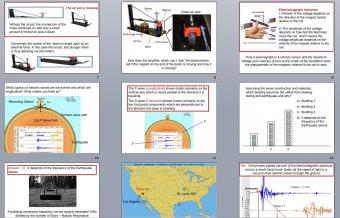
A collection of single-slide thought-provoking questions followed by a single slide answer. These can be used as a warm-up opener or an exit ticket at the end of class. The purpose of these slides is to enable physics teachers connect core principles of physics to the Earth.
Recognizing the limited time for adding new topics into the physics curriculum, these resources strive to seamlessly integrate geophysics topics and applications into the existing physics curriculum. For example, students can demonstrate their basic knowledge of waves while calculating the magnitude of an earthquake! Newton's Laws have to be endlessly applied to car's or boats, but these same principles are in play when considering tectonic plates or seismographs! Thus, by applying the Conceptual Physics approach used by Paul G. Hewitt these resources seek to make connections between the concepts of physics and the study of Earth.
Topics covered in slides include:
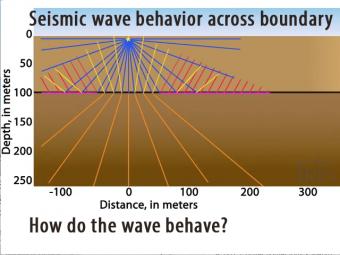
Seismic waves travel at different speeds through different materials. In this 2-layer model two wave fronts leave an impact at the same time but the lower layer is faster.
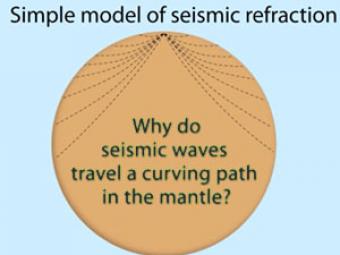
Seismic waves travel a curving path through the earth due to changes in composition, pressure, and temperature within the layers of the Earth.
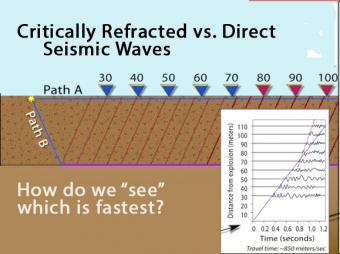
Animation shows the race between the direct seismic wave vs. the deeper, longer-path critically refracted seismic wave. Graph records the arrival times.
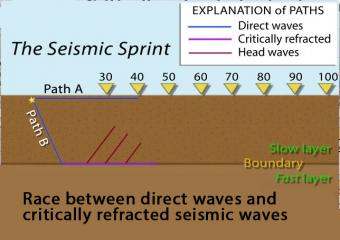
In this model of increasing velocity with depth, the critically refracted seismic rays speed up with depth as they pass 5 different velocity boundaries.
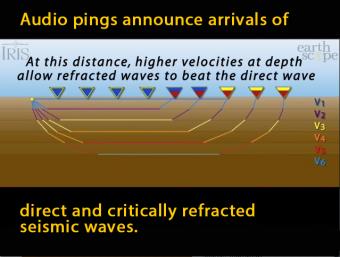
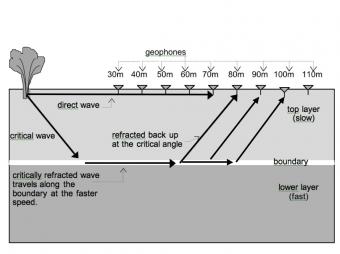
Like other waves, seismic waves obey the laws of physics. In this activity Physics students have the opportunity to apply their understanding of the basic concepts of waves (e.g. reflection, refraction and transmission of energy) as they examine seismic data to determine how far it is from the surface to the bedrock.
We encourage the reuse and dissemination of the material on this site as long as attribution is retained. To this end the material on this site, unless otherwise noted, is offered under Creative Commons Attribution (CC BY 4.0) license